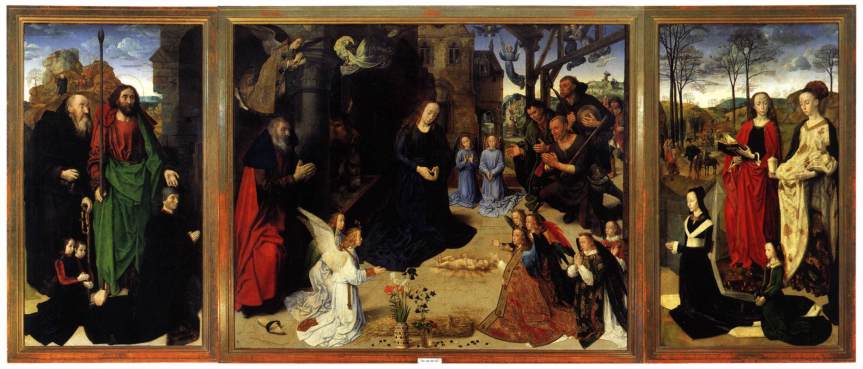The oil painting was commenced and first recorded as early as the twelfth century in Northern Europe. However, in the 15th century, the medium handling of the oil painting was largely done by the Netherlands painters such as Rogier van der Weyden and Jan van Eyck. Finally, the major turning point was witnessed as northern Europe hugely adopted oil painting. Jan Van Eyck had already been branded incorrectly the “the invention of oil painting” (“Van Eyck to Durer: The Influence of Early Netherlands Painting on European Art, 1430–1530” 234)
Oil paint’s adaptability gave it a vital component in accomplishing early Netherlands painting’s new aesthetic vision, which combined amazing realism with vivid colorings. Most pigments become translucent when combined with oil. This allowed artists to apply their colors in thin layers or glazes, resulting in the rich, blazing reds and greens found in the Arnolfini Portrait. For example, Virgin and Child with Saints Catherine of Alexandria and Barbara by Jan van Eyck, Petrus Christus’ Portrait of a Carthusian, or Hans Memling’s Virgin and Child with Saints Catherine of Alexandria and Barbara (Ashrafian 145).
The potential of oil paint to allow even brown or earth pigments to be glazed across vast areas to generate gray half-tones or a sensation of light flowing into a dim interior is also evident in Robert Campin’s Merode Triptych, particularly the scene of Saint Joseph in his workshop. Oil paint is changeable in that it can be used in both thick impasto and fine detail, allowing for a wide range of descriptive brushstrokes (Engler 53). Because it dries slowly, it may be mixed and treated while still wet to create soft, continuous shadows vital for the sense of three-dimensional form. These characteristics made it particularly well suited to communicating the reflective properties of various surfaces that ranged from polished marble to gleaming jewels, soft velvet to luminous highlights on the hard metal plate. Such textural differences are flawlessly captured in Van Eyck’s Van der Paele Virgin. Similarly, the oil media can accurately recreate the transitory features of rippling, transparent water.







